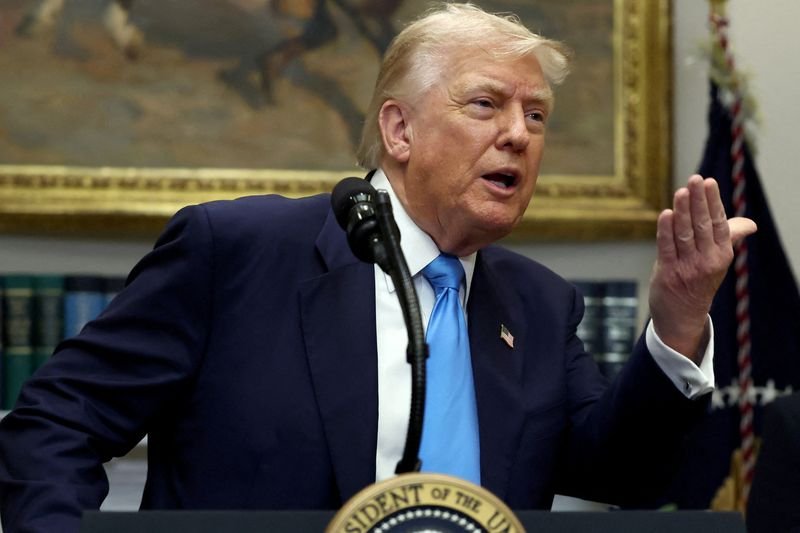Trump Tariffs Under Scrutiny by U.S. Appeals Court
In a significant legal proceeding, the U.S. Court of Appeals is preparing to assess the tariffs imposed by the Trump administration. These tariffs, which have sparked considerable debate and controversy, are now facing their most critical examination yet.
Background of the Tariffs
Initiated during Donald Trump’s presidency, these tariffs were designed to protect American industries by increasing the cost of imported goods. The administration argued they were essential for safeguarding jobs and promoting domestic manufacturing. However, critics contend that the tariffs have hurt American consumers and businesses due to inflated prices on various imports.
The tariffs primarily target steel, aluminum, and numerous products from China, among other nations. As a result, the trade landscape has shifted significantly, instigating retaliatory measures from affected countries and leading to a complicated international trade environment.
Legal Challenges
Several lawsuits have emerged in response to these tariffs, claiming they are unconstitutional and not in line with established trade laws. Various stakeholders, including businesses and trade organizations, have challenged the legitimacy of the tariffs, asserting that they disrupt fair competition and hurt the very industries they are intended to protect.
The upcoming decision by the U.S. Court of Appeals will determine whether the tariffs remain in place or are struck down. This ruling could also set a precedent for future trade policies and the ability of the executive branch to impose similar measures without congressional approval.
Economic Implications
Experts have raised concerns about the economic ramifications of sustaining these tariffs. Many American companies that rely on imported materials have reported increased production costs, which ultimately affect consumers. If the appeals court decides to uphold the tariffs, it may lead to continued price hikes on everyday goods, from household products to electronics.
Conversely, if the court nullifies the tariffs, it could lead to a sudden increase in imports and potentially lower prices for consumers. However, this scenario also poses risks, such as the potential faltering of domestic industries that claimed the need for protective measures.
Perspectives from Industry Leaders
Industry leaders have voiced their concerns about the ongoing uncertainty regarding tariffs. Manufacturers argue that the inconsistency in trade policies affects long-term planning and investment strategies. A stable trade environment is crucial for fostering innovation and growth, and business leaders are urging the court to seek a balanced resolution.
On the other side of the argument, some interviews with representatives from affected communities reveal the struggle faced by those dependent on the protectionist measures. They advocate for the continuation of the tariffs, emphasizing the need to protect local jobs and industries from foreign competition.
The Political Landscape
The legal proceedings come amid an increasingly polarized political climate surrounding trade issues. Supporters of the tariffs argue they are a necessary tool to combat unfair practices by other nations, while opponents view them as detrimental to U.S. economic interests. This divide complicates the judicial review process, as the implications of the ruling extend beyond law into the political arena.
As hearings unfold, both sides prepare their arguments, highlighting the broader implications of the court’s decision on future trade relations and economic policy in the U.S. A ruling against the tariffs could signal a shift toward more collaborative international trade agreements, while a decision to maintain them could reinforce the protective strategies favored by some lawmakers and industry advocates.
What’s Next
As attention turns to the U.S. Court of Appeals, many are eager to see how the judges will navigate these complex legal and economic issues. The outcome may well reshape U.S. trade policy, potentially influencing the way tariffs are utilized in the future.
With the economic stakes so high, both supporters and opponents of the tariffs await the court’s decision with bated breath. The implications will likely resonate across various sectors, impacting everything from manufacturing to consumer prices.
In conclusion, the appeal process represents a crucial chapter in the ongoing debate over tariffs in U.S. trade policy. As the judiciary weighs its options, the path forward on this contentious issue remains unclear, making it an important focal point for businesses, consumers, and policymakers alike.
